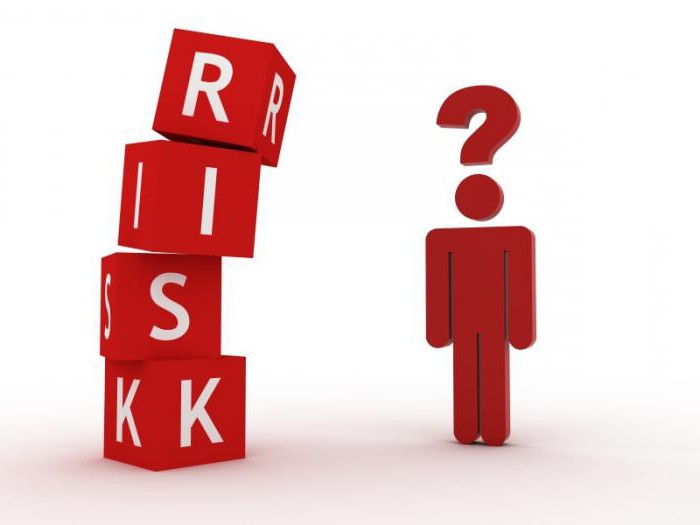The activities of any enterprise can be divided into two parts: the production process and the movement of cash resources. For example, a company borrows money for the purchase of materials, manufactures products from its own facilities, sells them and pays its accounts payable at that expense. As can be seen from this simplest situation, the production and monetary process are closely interconnected and cannot exist without one another. Therefore, the forecast of the success of the enterprise can be made by looking at the ratio of total solvency. We will talk about him in today's article.

General information
To begin with, we’ll deal with the basic concept. Solvency is the ability to fulfill its own financial obligations of an economic entity at the expense of the available financial resources. If the company is unable to pay its debts on time, then this may cause bankruptcy. There are two types of insolvency:
- Cash.
- Balance sheet.
Cash problem
The total solvency ratio is in no way associated with the first type. There is a current indicator for this, which we will talk about later. Cash insolvency means that the company has enough assets to pay its debts, but it does not have money. For example, a company owns a large building or an expensive car, but with the help of these things you can’t immediately answer for the obligations arising before it. This problem is usually resolved through negotiation.
Shortage of assets
Much more serious problems arise when an enterprise has neither an expensive car, nor a large building that can be sold. This type of insolvency is called balance sheet. It means that the assets of the enterprise are not enough to pay off the obligations arising from it. It should be understood that such a situation does not necessarily mean imminent bankruptcy. Successful negotiations may result in a decision on debt restructuring. You need to understand that a company with a balance insolvency does not necessarily have problems with cash in the short term.

Financial ratios enterprise health
The key to success is competent planning. And the latter is difficult to imagine without indicators that help assess the current and future state. Assessment of the financial health of the enterprise is based on seven indicators, one of which is the coefficient of total solvency. Among them:
- Total liquidity ratio.
- The ratio of assets to debt.
- Short-term liquidity.
- Debt service ratio.
- The rate of savings.
- The coefficient of total solvency.
- The ratio of investment to total assets.
Using these indicators helps to more deeply assess the financial condition of the enterprise, the opportunities and threats to its position. The next step after it is direct planning, taking into account the correct measures to eliminate existing problems with solvency.
The meaning of the term
The total solvency ratio of an enterprise is one of a number of indicators that are used to assess the ability of an enterprise to pay off its long-term debt.Moreover, it allows you to measure the size of the company's profit after taxes, not counting non-cash depreciation costs.

Total solvency ratio: formula
To calculate this indicator, net profit after tax (NP), depreciation expense (A) and total debt (TL) are used. In this case (NP + A) / TL = total solvency ratio. The rate depends on the industry. In the general case, it is believed that a result of more than 20% means that the company is solvent. The smaller it is, the higher the likelihood of a company defaulting due to the inability to pay on its payables on time. The optimal indicator is from 0.5 to 0.7. With reliable sources of external borrowing, the company can maintain solvency even in the case of high turnover of its assets.
Other measurement methods
We examined the coefficient of total solvency, the formula of which allows us to assess the long-term prospects of the enterprise, is not the only one. The following indicators are distinguished:
- Current liquidity ratio.
- Security with personal funds.
- Recovery ratio and solvency loss.
- Debt to stock ratio.
- Share of net asset value in current debt.
- The ratio of total liabilities and capital of the company.
- Share of fixed assets in net worth.

Current liquidity
This indicator is calculated by dividing current assets into current liabilities. Normal is its value from 1.5 to 2.5. Small numbers mean that the company has difficulties with covering current liabilities and it is necessary to reduce current assets and accounts payable. High rates are associated with insufficiently active use of current assets. To solve this problem, it is necessary to improve access to short-term lending. If this ratio is less than 0.1, then the company is considered insolvent.
It should be understood that low rates are not evidence of imminent bankruptcy. Odds help to understand the correctness of the current strategic and tactical course. Successful negotiations with creditors and competent management decisions can help the company become successful again. Most of the rules are set with a margin so that managers have time to quickly make decisions to save their business.
Personal Security
This indicator allows you to assess how the company is provided with its own capital. Its calculation is carried out in two stages:
- Calculate the difference between the total amount of personal capital and the value of fixed assets.
- Calculate the current price of working capital available to the company. Moreover, it is important to consider not only cash, but also finished goods and receivables.
Security ratio personal means equal to the result of dividing current assets into sources of capital of the company. If it is less than 2, then the company is not solvent.
Indicator of recovery and loss of ability to pay obligations
This indicator becomes extremely valuable in a crisis. It is calculated as the ratio of the calculated coefficient to the established norm. If its value exceeds unity in a six-month period, then in the event of a crisis, it will be able to return to previous indicators. If it is lower, then this is no longer possible.

The solvency loss ratio reflects how quickly the company can lose its position and wallow in debt. If it is more than one in a three-month period, then there is only a small risk of such a situation. A low value is an almost complete guarantee of loss of solvency of an enterprise during one billing period.
Total solvency ratio: value
One of the most important characteristics of the activity of any enterprise is its ability to calculate its obligations. The total solvency ratio on the balance sheet should take into account the liquidity of the company's assets, that is, their ability to turn into real money. The larger it is, the higher the level of debt an enterprise can have. A general solvency ratio below the norm means that the company is highly dependent on the stability of external financing.
Types of assets by their liquidity
The following groups of values are distinguished at the disposal of the enterprise: current and permanent. The first includes the most liquid, quickly and slowly sold assets. It is easiest to pay a debt in cash on a current bank account. In addition to them, the most liquid assets include short-term stocks and bonds. Fast-selling values include accounts receivable and deposit accounts. The last group includes finished products, work in progress, raw materials. Permanent financial assets include hard-to-sell assets, that is, buildings, equipment, vehicles and land owned by the enterprise.
Values and Commitments
The total solvency ratio shows the ratio between assets and liabilities. The former are resources controlled by the enterprise. They are divided into two types. Current assets include cash and cash equivalents that are intended to be sold within 12 months or one operating cycle. For example, customer debt or finished goods. Non-current assets include assets that will be used over several operating cycles. These, in particular, include intangible assets, long-term investments.

Liabilities - this is the source from which economic assets are formed. They are divided into own and borrowed. The former, for example, include enterprise capital and deferred income. As for the attracted liabilities, they are divided by the timing of the return. The last group is taken into account when assessing solvency. As for assets, there are formulas with their aggregate indicators or only working capital assets.
Total and estimated coefficient
A thorough analysis of the solvency of the enterprise involves the use of so-called reference indicators. In essence, they are close to the necessary ratios, but differ in that their formulas do not use current debt, but estimated. Reference total liquidity ratio allows you to determine the solvency of the enterprise in the presence of ideal working conditions. Knowing it, you can determine the reasons for its difference from the usual indicator. To calculate the reference coefficient of total liquidity, it is necessary to divide the normal value of the current assets of the enterprise into short-term debt.

Liquidity and solvency
Both of the above indicators characterize the financial condition of the company. But they have significant differences. The calculation of the overall solvency ratio allows you to assess the ability of the enterprise to respond according to its long-term liabilities. Liquidity is associated with the near future. It means the ability of the enterprise to pay its obligations in the short term. The term is also used to describe the ability to quickly exchange assets for cash. A high solvency ratio indicates that the company has more than it owes to its creditors. In other words, a liquid company may have enough funds to meet its short-term obligations, so it may not expect an impending financial disaster at all.Therefore, both indicators are equivalent for assessing the state of an economic entity. A successful company must be both liquid and solvent.



